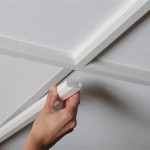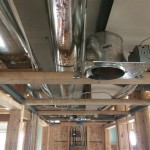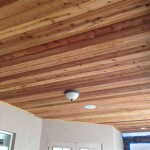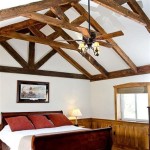Why Did Older Homes Have High Ceilings?
Many older homes, particularly those built before the widespread adoption of air conditioning, feature strikingly high ceilings. This architectural characteristic wasn't simply an aesthetic choice; it served several practical purposes related to comfort and social status.
One of the most significant reasons for high ceilings was temperature regulation. Heat rises. A larger volume of air within a room allows the warmer air to rise higher above the occupied zone, keeping the lower portion of the room where people lived and worked noticeably cooler. This was especially crucial in warmer climates and during summer months. The greater distance between the ceiling and the occupants allowed for a more gradual temperature gradient, creating a more comfortable living environment.
Before the advent of electric lighting, natural light was the primary source of illumination within a home. High ceilings maximized the penetration of natural light deeper into the rooms, particularly when combined with large windows. This made homes brighter and more cheerful and reduced the need for artificial light sources like candles or oil lamps, which were expensive and presented fire hazards.
Air circulation is another key factor. Higher ceilings promote better airflow, facilitating natural ventilation. Warm, stale air could rise and escape through high windows or transom windows placed above doors, drawing cooler, fresh air in from lower openings. This natural ventilation system helped to improve air quality and reduce stuffiness, which was particularly important in times before mechanical ventilation systems.
The perception of spaciousness also played a role. High ceilings create a feeling of grandeur and openness, making even relatively small rooms feel larger and less confining. This was a desirable architectural feature, contributing to a sense of elegance and luxury.
In grander homes, high ceilings were often a symbol of wealth and status. Constructing high ceilings required more materials and labor, making them a more expensive undertaking. Therefore, high ceilings became associated with prosperity and social standing, serving as a visible display of the homeowner's affluence.
Architectural styles also influenced the prevalence of high ceilings. Many historical architectural styles, such as Victorian, Georgian, and Federal, inherently incorporated high ceilings as a defining feature. These styles emphasized elaborate ornamentation, large windows, and proportionally high ceilings, contributing to the overall aesthetic of the era.
The use of fire was commonplace in older homes, for both heating and cooking. High ceilings provided a buffer zone, reducing the risk of fire spreading to the ceiling and potentially the rest of the structure. The increased volume of air also helped to dilute smoke and fumes from fireplaces and stoves, improving indoor air quality.
Acoustics also benefited from high ceilings. In rooms with high ceilings, sound waves have more space to travel and dissipate, reducing echoes and reverberations. This created a more pleasant acoustic environment, particularly in larger rooms used for entertaining or social gatherings.
The ability to incorporate decorative elements was another advantage of high ceilings. Elaborate plasterwork, ceiling medallions, chandeliers, and other decorative features were commonly used to enhance the aesthetic appeal of high-ceilinged rooms, showcasing the artistry and craftsmanship of the time.
While advancements in technology, particularly the introduction of air conditioning and electric lighting, have lessened the practical necessity of high ceilings in modern homes, they remain a desirable feature for many homeowners. The sense of spaciousness, natural light, and architectural elegance they provide continue to be valued, even in contemporary designs.
Changing construction methods and the increasing cost of building materials also contributed to the decline of high ceilings in newer homes. As building practices evolved and materials became more standardized, constructing high ceilings became relatively more expensive and less common in mass-produced housing.
The shift towards more compact and energy-efficient homes further contributed to the trend towards lower ceiling heights. Smaller volumes of air are easier and less expensive to heat and cool, making lower ceilings a more practical choice in modern construction practices focused on energy conservation.

Classic Or Craze High Ceilings St Louis Homes Lifestyles

How To Take Advantage Of High Ceilings In Renovations Archdaily

How To Take Advantage Of High Ceilings In Renovations Archdaily

How To Take Advantage Of High Ceilings In Renovations Archdaily

Here S The Standard Ceiling Height For Every Type Of Bob Vila

Here S The Standard Ceiling Height For Every Type Of Bob Vila

The Ultimate Guide To Vaulted Ceilings Pros Cons And Inspiration

5 Ways You Can Raise Your Ceiling For More Space

How Much Does It Cost To Raise A Roof 2024 Angi

Sizing It Down How To Decorate A Home With High Ceilings Decoist
Related Posts








